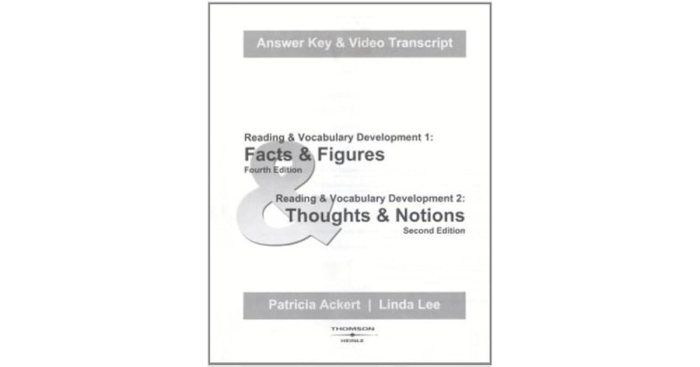Notions about motions answer key hold the key to understanding the fundamental principles that govern the movement of objects. From the simplest of everyday occurrences to the most complex of scientific endeavors, motion is an integral part of our world.
This answer key provides a comprehensive guide to the key concepts, types, equations, and applications of motion, empowering you to decipher the language of movement and unlock the secrets of our dynamic universe.
Delving into the realm of motion, we will explore the fundamental principles that govern the displacement, velocity, and acceleration of objects. We will uncover the nuances of linear and circular motion, contrasting their distinct characteristics and unraveling the equations that describe their behavior.
Through engaging examples and exercises, you will gain a deep understanding of Newton’s laws of motion and their profound implications for our understanding of the physical world.
Key Concepts of Motion: Notions About Motions Answer Key

Motion is the change in position of an object over time. The fundamental principles of motion describe how objects move and interact with each other. These principles include:
- An object at rest will remain at rest unless acted upon by an external force.
- An object in motion will remain in motion with the same speed and in the same direction unless acted upon by an external force.
- The acceleration of an object is directly proportional to the net force acting on the object, and inversely proportional to the mass of the object.
Displacement is the change in position of an object. Velocity is the rate of change of displacement, and acceleration is the rate of change of velocity.
Motion can be observed in various contexts, such as the movement of a ball thrown in the air, the motion of a car driving down the road, or the motion of the Earth orbiting the Sun.
Types of Motion
Motion can be classified into different types based on the trajectory of the object. Linear motion is motion along a straight line. Circular motion is motion along a circular path. Uniform motion is motion with constant speed. Accelerated motion is motion with changing speed.
- Linear Motion:Constant linear motion occurs when an object moves in a straight line with constant speed. Accelerated linear motion occurs when an object moves in a straight line with changing speed.
- Circular Motion:Uniform circular motion occurs when an object moves in a circle with constant speed. Non-uniform circular motion occurs when an object moves in a circle with changing speed.
Different types of motion have different characteristics. For example, linear motion has a constant velocity, while circular motion has a constant speed but changing velocity.
Motion Equations

Newton’s laws of motion provide a mathematical framework for describing and predicting the motion of objects. These laws state that:
- An object at rest will remain at rest unless acted upon by an external force.
- An object in motion will remain in motion with the same speed and in the same direction unless acted upon by an external force.
- The acceleration of an object is directly proportional to the net force acting on the object, and inversely proportional to the mass of the object.
From Newton’s laws, we can derive the following equations of motion for constant acceleration:
- v = u + at
- s = ut + 1/2 at^2
- v^2 = u^2 + 2as
where:
- v is the final velocity
- u is the initial velocity
- a is the acceleration
- t is the time
- s is the displacement
Graphical Representations of Motion
Motion graphs are graphical representations of the motion of an object. These graphs can be used to analyze motion and make predictions.
- Position-time graphs:These graphs show the position of an object as a function of time.
- Velocity-time graphs:These graphs show the velocity of an object as a function of time.
- Acceleration-time graphs:These graphs show the acceleration of an object as a function of time.
Motion graphs can be used to determine the displacement, velocity, and acceleration of an object. They can also be used to predict the future motion of an object.
Applications of Motion Analysis
Motion analysis is the study of the motion of objects. This field has applications in various disciplines, including physics, engineering, and sports.
- Physics:Motion analysis is used to study the fundamental principles of motion, such as Newton’s laws of motion.
- Engineering:Motion analysis is used to design and optimize machines and structures.
- Sports:Motion analysis is used to improve athletic performance and prevent injuries.
Motion analysis can be used to solve real-world problems, such as designing safer cars, improving the efficiency of manufacturing processes, and optimizing athletic performance.
Essential Questionnaire
What is the difference between displacement, velocity, and acceleration?
Displacement refers to the change in position of an object, velocity measures the rate of change of displacement, and acceleration quantifies the rate of change of velocity.
How do Newton’s laws of motion explain the behavior of objects in motion?
Newton’s first law states that an object at rest will remain at rest unless acted upon by an external force. The second law describes the relationship between force, mass, and acceleration, while the third law highlights the principle of action and reaction.
What are the applications of motion analysis in real-world scenarios?
Motion analysis finds applications in fields such as engineering, sports, and medicine. Engineers use it to design efficient machines, athletes analyze their performance to improve technique, and medical professionals employ it to study human movement for rehabilitation purposes.